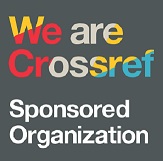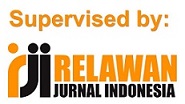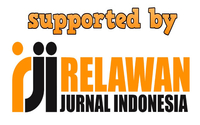DECODING HUMOR AND RELIGION IN INDONESIAN NAMES
Abstract
This article aims to explore the structure and meaning of unique Indonesian names, their origins, and the humor they encompass. The topic was selected due to its recent viral status on social media. Utilizing qualitative methods and library research, data were gathered from internet news articles and analyzed through theories of names and nicknames, humor, and Arabic and Islamic religion. These theoretical frameworks were particularly pertinent as the study revealed that many unique names are intricately linked to Islamic and Arabic elements. The findings suggest that the uniqueness of these names often arises from spontaneous selection, with minimal deliberation or understanding of the religious terms incorporated. Predominantly found among the lower-middle class, these names stand out due to their distinctiveness, which often elicits humor. The humorous aspects of these names can be categorized under incongruity theory and, in some cases, superiority theory. This research highlights the cultural and social dimensions of naming practices in Indonesia and their unintended comedic impact.
Keywords
Full Text:
PDFReferences
Afflerbach, K. A. (2015). Humorous developments: Ridicule, recognition, and the development of agency. Retrieved from University of North Florida Electronic Theses and Dissertations. (602). https://digitalcommons.unf.edu/etd/602
Ahmad, S. (1999). A Dictionary of Muslim Names. London: C. Hurst & Co. Publishers.
Akmal, P. (2015). Kenalkan, pria ini bernama tuhan dan dia tinggal di banyuwangi. Retrieved from https://news.detik.com/berita/d-2997299/kenalkan-pria-ini-bernama-tuhan-dan-dia-tinggal-di-banyuwangi
Askuri, & Kuipers, J. C. (2018). The Politics of Arabic Naming and Islamization in Java: Processes of Hybridization and Purification. Al-Jāmi‘ah: Journal of Islamic Studies, 56(1), 59-94. https://doi.org/10.14421/ajis.2018.561.59-94
Evason, N. (2021). Naming. Retrieved from https://culturalatlas.sbs.com.au/indonesian-culture/indonesian-culture-naming
Faizal, A. (2017). Cerita di Balik Nama Alhamdulillah Lanang Anakku. Retrieved from https://regional.kompas.com/read/2017/05/18/16053771/cerita.di.balik.nama.alhamdulillah.lanang.anakku
Ganyi, F. M. (2013). The Symbolic Connotations and Functional Relevance of Nicknames among the Bakor Speaking People of Northern Cross River State, Nigeria. International Journal of Development and Sustainability, 2(2), 941-956.
Gladkova, A. (2002). The semantics of nicknames of the american presidents. Proceedings of the 2002 Conference of the Australian Linguistic Society, 1, 1-11.
Hadi, W. (2005). Catatan Harian Membuka Hati. Jakarta: Hikmah.
Hardiansyah, R. (Ed.). (2019). Arti Nama Bagi Pria Bernama Slamet Hari Natal, Terungkap Asal Usul Pemberian Nama. Retrieved from https://lampung.tribunnews.com/2019/12/24/arti-nama-bagi-pria-bernama-slamet-hari-natal-terungkap-asal-usul-pemberian-nama
Inge, N. (2015). Asal Muasal Warga Palembang Ini Diberi Nama Syaiton. Retrieved from https://www.liputan6.com/news/read/2302851/asal-muasal-warga-palembang-ini-diberi-nama-syaiton
Irwanto. (2015). Ini komentar MUI soal nama orang Saiton dan Tuhan. Retrieved from https://www.merdeka.com/peristiwa/ini-komentar-mui-soal-nama-orang-saiton-dan-tuhan.html
Jeffrey, H. (2008). Cuss Words and Names in Indonesia. Fact and Details. Retrieved from http://factsanddetails.com/indonesia/People_and_Life/sub6_2b/entry-3974.html#chapter-3
Jennings-Edquist, G. (2019). Why parents are giving their kids 'unique' baby names. ABC Life. Retrieved from https://www.abc.net.au/life/why-parents-are-giving-their-kids-imaginative-baby-names/10720110
Kantor Sensus & Statistik Propinsi Daerah Tingkat I Jawa Tengah. (1987). Jawa Tengah Selayang Pandang.
Kennedy, R. (2015). Nicknames. In J. R. Taylor (Ed.), The Oxford Handbook of the Word.
Kennedy, R., & Tania, Z. (2006). Nicknames and The Lexicon of Sports. American Speech, 81(4), 387-422. https://doi.org/10.1215/00031283-81-4-387
Kolawole, O., & Adeosun. (2009). Nicknames and Name Calling among a Population of Nigerian School children. European Journal of Paediatric Dentistry, 10(3), 115-120.
Lee, J. H. X., & Kathleen M. N. (Eds.). (2011). Encyclopedia of Asian American Folklore and Folklife, Volume 1. Santa Barbara, CA: ABC-CLIO.
Liao, C. (2006). Analysis of Nicknames of Junior High School Students. Journal of Language and Linguistics, 5(1), 25-35.
Lintott, S. (2016). Superiority in Humor Theory. The Journal of Aesthetics and Art Criticism, 74(4), 369-379. https://doi.org/10.1111/jaac.12345
Littlejohn, S. W., & Karen A. F. (Eds.). (2009). Encyclopedia of Communication Theory, Volume 1. Thousand Oaks, CA: SAGE Publications Inc.
Loven, K. (2008). Watching Si Doel: Television, Language and Identity in Contemporary Indonesia. Leiden: KITLV Press.
Priantono, B. (2013). What I Think about Indonesian: Indonesian Naming System. Retrieved from https://bambangpriantono.wordpress.com/2013/04/29/what-i-think-about-indonesian-indonesian-naming-system-introduction/
Qolawun, A. A. (2016). Generasi Copy Paste. Demak: Hasfa Publishing.
Sa'diyah, H. (2015). Ini Saran MUI untuk 'Tuhan. Retrieved from https://www.republika.co.id/berita/dunia-islam/islam-nusantara/15/08/27/ntqu4w313-ini-saran-mui-untuk-tuhan
Schimmel, A. (1992). Islam: An Introduction. New York: State University of New York Press.
Skutnabb-Kangas, T. (Ed.). (1995). Linguistic Human Rights: Overcoming Linguistic Discrimination. Berlin: Walter de Gruyter.
Soban, K. (2009). The Pragmatics of Nicknames Students Use for their Lecturers. Human Sciences Research Council (HSRC), Cape Town, South Africa. Retrieved from https://www.researchgate.net/publication/292149459_The_Pragmatics_of_Nicknames_Students_Use_for_their_Lecturers
Starks, D., & Taylor-Leech, K. (2011). A Research Project on Nicknames and Adolescent Identities. New Zealand Studies in Applied Linguistics, 17(2), 87-97.
Sujana. (2014). Ngetop itu Gampang, 40 Hari Langsung Tenar. Jakarta: Elex Media Komputindo.
Taufiqurrahman. (2015). Setelah Tuhan dan Saiton, Muncul Nabi di Pamekasan. Retrieved from https://regional.kompas.com/read/2015/08/31/20505591/setelah.tuhan.dan.saiton.muncul.nabi.di.pamekasan
Widodo, S. T. (2014). The Development of Personal Names in Kudus, Central Java, Indonesia. Procedia - Social and Behavioral Sciences, 134, 154-156. https://doi.org/10.1016/j.sbspro.2014.04.223
Wow, S. T. (2017, July 13). 18 Outrageous Indonesian Names Legally Proven by ID Cards. Retrieved from https://www.wowshack.com/18-outrageous-indonesian-names/
DOI: https://doi.org/10.30743/ll.v8i1.8428
Refbacks
- There are currently no refbacks.
Fakultas Sastra
Universitas Islam Sumatera Utara (UISU), Medan
Jl. Sisingamangaraja Teladan Medan 20217
Telp. (061) 7869911, e-mail: language_literacy@sastra.uisu.ac.id









